- Home
- James A. Michener
Space Page 3
Space Read online
Page 3
Mott never used his title, earned with distinction in graduate work at Louisiana State, where he had taught the fledgling science of aeronautics, and he certainly avoided mentioning his undergraduate college, for he was tired of clever men who chanted:
“I’m a rambling wreck from Georgia Tech
And a hell of an engineer.”
But now when these accusing generals, so much older and heavy with braid, heckled him, asking if he was really a professor, he felt he must inflate his record. “Indeed I am, In advanced aviation theory.” Actually, he taught the beginners’ course.
“Clarify your point, Professor.”
Slowly and carefully Mott looked at each of the seven. He must say enough to convince them, not enough to betray his major secret. He coughed and clasped his hands nervously, all his actions calculated to gain him a respectful hearing. “There are three men living in the Peenemünde camp tonight whose safety is absolutely vital to the free world. I think you can guess why.”
“Let me try,” an older English civilian said. “You Americans and we English are pitifully far behind in rocketry. We’re seeing what can be accomplished with the first generation of German rockets. And we fear the Russians are far ahead of us. So that in the postwar world …”
“There are three German scientists we must keep alive until they reach our lines,” Mott said. “Count Wernher von Braun, a relatively young man who seems to be the genius of the rocket operation. My job from here on out is to get him safely to our side. Then we badly need General Eugen Breutzl. He’s the managerial genius. We have reason to believe he’s not a Nazi, just a technical wizard who could [12] move our program ahead by generations. And the third man is a shadowy fellow. Name seems to be Dieter Kolff, if we have it correct. He’s about thirty-five years old, and the reason we must get him is that he may prove to be the real genius of the team. He’s their expert on the A-10.”
“What’s that?” a civilian asked. “Our information doesn’t go beyond the A-6.”
“Well,” Mott said, as if consulting with a seminar of extremely gifted graduate students, “you’re the world’s experts on the A-4, which you call the V-2. You know about the next in line, the bigger versions up through the A-6 and perhaps A-7. But we have fairly solid information that this quiet expert Kolff, if he really exists, is specializing on the A-10.”
“And what is that?” the same civilian pressed.
“It’s the one that can hit New York. Fired from Germany.” There were several gasps, after which he said, “Yes, A-10 or something like it is only a short time down the road.”
“I should think you’d want to wipe out the living quarters above all else,” the English general said. “Exterminate such vermin.”
“No! No!” Mott protested. “Because neither you nor we know how to make a rocket that will carry a bomb even ten miles. And we have reason to believe that the Russians are about to come up with one that will” fly a thousand.”
“So you think that we must keep these three men alive?” the American general asked.
“It is vital.”
“Then why in hell do we bomb the place at all?”
And that was the question which could not be answered openly. Mott retreated rather lamely to the heavy water. “To eliminate a short-range danger, we’ve got to knock out the heavy-water capacity. To protect our long-range security, we’ve got to save those three German scientists.”
“Professor Mott,” the general snorted, “you sound like a damned fool. To break this on us at takeoff time for a major strike.”
“I feel like a fool,” Mott conceded. “But have we a safe phone? Please instruct your pathfinders to lay their guidance flares well away from the living quarters.”
[13] “We can do better,” the English general said. “Young Merton, who will fly as tonight’s coordinator, is waiting outside.”
Master Bomber Merton was twenty-three years old, a blond young man weighing less than a hundred and forty. He would have been out of place as a junior master in a classroom of unruly boys, but tonight he proposed to fly unaccompanied across the North Sea to Peenemünde, where he would circle aloft for nearly two hours, radioing instructions to the four English pathfinder planes as to where they should drop their flares, and then to the oncoming American bombers as to how they should launch their devastating bombs. The fate of three hundred and ninety-eight planes would rest in his hands; he would be responsible for the future of German rocketry, German heavy-water bombs, if they existed, and the security of he free world. He grinned boyishly and seemed shy in the presence of so many experts.
The woman photographic analyst moved to the wall and pulled aside white linen sheets that hid the target maps for Peenemünde, the little island nestled along the Prussian shore. It resembled a fetus, a monstrous thing brought to birth by mad scientists, and at the far northern end stood the launching sites for the great rockets that had alarmed the world. The test stands for the engines were clearly designated, as were the command headquarters and the army barracks. In green, well down on the island, clustered the buildings labeled SCIENTISTS’ HOUSING, and t was to these that she pointed.
“We have solid evidence from both our photographs and prisoner interrogations that the scientists you seek do indeed live here. We believe their housing was moved south after our big raids of last year.”
“If there were heavy-water experiments under way,” Mott asked, “where would they center?”
“When we had the abortive peroxide scare a year ago-”
“It was not abortive,” Mott said sternly.
“We found nothing,” the woman continued, unruffled. “But we guessed that it would have been up here.”
“That’s where we’re concentrating tonight,” Master Bomber Merton said.
“And that’s what must be avoided,” Mott said almost pleadingly.
[14] “We can place the bombs anywhere you like,” Merton said enthusiastically. “But you must tell us.”
Before Mott could respond, the American general stared at the two young men from beneath his heavy brows. “Is Washington committed to this strategy?”
“It is,” Mott said quietly. “I’m one of eleven men directed to spend the rest of the war trying to salvage those three Germans. Von Braun, Breutzl, Kolff. General, we must have them.”
There was a protracted silence, during which Mott wished that he could divulge what he had learned on the sand flats of New Mexico: that the United States had progressed far beyond the heavy-water principle and was in position to construct an atom bomb even more powerful than speculation had predicted. World terror was possible. It might arrive at any moment, from Russia, from Germany, from New Mexico. All things were in flux, and any nation that managed even a week’s lead over the others would have an advantage of stupefying magnitude. The bomb that these men scoffed at was a reality, or almost so, and the likelihood that Germany might be first to launch it, and with rockets that could not be intercepted, was so awful to contemplate that everything possible must be done to interdict it.
Please, please, Mott thought, make these men accept partial evidence. They’ll see the actuality all too soon.
“It sounds like an asinine proposition,” the American general said. “Bomb hell out of an island, but don’t touch the bottom half.”
“Sometimes,” the English general said consolingly, “we’re forced to adopt half-measures. To keep the whole in balance.”
“What do you mean?” the American asked.
“Surely I don’t want to waste my heavy bombers striking at a temporary target like the Wassenaar launch site. You know we should be concentrating on knocking out the heavy industry. But Churchill has to give evidence to the citizens of London that we’re doing everything we can to protect them from Hitler’s rockets.” He paused and turned to Mott. “How many people was it we lost today?”
“About fifty.”
A Royal Air Force man shook his head. “If we know about it, all London knows about it.
Fifty more dead. And [15] the other day smack into a cinema. Two hundred dead that time. So we have to bomb Wassenaar.”
“Is this line safe?” the Master Bomber asked.
“Yes.”
Merton spoke with his people at Benson Air Force Base in the direction of Oxford, and Mott could hear him planning the night as if it were a game: “Four pathfinders will find me already over the target. You’ll drop your flares well away from the living quarters marked in green. Plenty of moonlight. Plenty of visibility. Ten minutes after you leave, the Moon will set and it will be dark. Then the Yanks come on. I’ll vector them in, but they must not ;overshoot the flares. Is that understood? Roger and out.”
Visualizing both the German A-4 rockets and the monstrous American bombers, Mott wondered at the curious and self-defeating decision made by Adolf Hitler. One of his famed rockets could deliver about a ton of explosive, and never on a precisely determined target, while an American bomber, which cost about the same as a rocket, could drop six tons within a closely defined area.
At first glance it seemed that Hitler had made a hideously wrong choice, but Mott also knew that before long the Germans would have stouter rockets capable of delivering eight and ten tons of explosives, and his secret briefings had caused him to fear that within the year someone would have anew kind of bomb which would be calculated in the million-ton range, and someone else would have rockets which could deliver such a bomb across the Atlantic.
These were the days of awesome decision, and he watched with relief as Master Bomber Merton put down the phone, tapped the map, and said cheerily, “Whatever they have hiding at Peenemünde, it gets a thrashing tonight.” And off he went to direct his hornets to a target which might or might not be fabricating heavy water to be used in an atomic bomb which might or might not be completed in time to annihilate London within the near future.
When he departed, Mott sighed. The hiding place of Von Braun, Breutzl and Kolff would be spared for one more night.
“Was it really so important, Professor Mott?” one of the American generals asked.
[16] “The security of the world might well depend upon what we accomplish this night.”
On this same afternoon of 24 October 1944 the remnants of the Japanese Imperial Navy, badly battered by incessant American pressure, launched one of the most daring ventures in the history of naval warfare. It was a door-die effort made inescapable by General MacArthur’s recent surprise landing in the Philippines. Japanese intelligence saw quickly that MacArthur’s forces were not well secured and that a bold strike might drive them from the Philippines, bloody MacArthur’s nose, and give Japan a year’s respite to strengthen its homeland defenses.
This stupendous effort of throwing every available fighting ship and airplane against the Americans was called Sho-Go (Operation Victory) and its success depended upon the resolute performance of three war-hardened admirals who had been asked, each one separately, to perform a miracle. The top planners had every reason to believe that Sho-Go would drive the Americans from the sea, and humiliate MacArthur once again.
Sho-Go had three simple principles, the intermeshing of which would ensure a surprising victory. The entire surviving fleet would be divided into three parts, each with a totally different responsibility. The North Fleet, under the command of Admiral Ozawa Jisaburo, would sail down from Japan, allow itself to be seen, and then toy around north of the Philippines in hopes that Admiral Halsey would be tricked into rushing north with the bulk of the American fleet. These ships constituted a decoy which, because it would be outnumbered if Halsey fell into the trap, could expect to lose many of its major components. To make the bait more alluring, this fleet brought with it four huge carriers on the principle that “Admiral Halsey can never resist going for our carriers.” They would be especially vulnerable.
The South Fleet drew the suicide mission. It would form off Borneo, well to the south of the Philippines, steam north, keeping to the coast of Asia, and then come sweeping east to pick its way through a narrow strait, which, if negotiated, would throw the great battleships and cruisers right onto the lap of MacArthur’s shorebound men. But to accomplish this, the South Fleet would have to [17] break through a relatively small American defensive fleet that would probably be alerted and waiting at the exit from the strait. That a naval battle of tremendous magnitude must take place, there was little doubt, and the Japanese admiral in charge of this fleet had good reason to suppose that by nightfall on 25 October he and all his ships would be dead.
He was Nishimura Teiji, a man without fear. He had fought his ships bravely in many battles and expected to continue doing so, whatever Sho-Go directed him to do. With consummate skill he sneaked his battle line up from Borneo, around the southern Philippine Islands and into the narrow strait that would lead him to MacArthur’s beachhead. As dusk fell he prayed to his Shinto gods of war that no American fleet would be waiting for him at the exit, but as a sensible man he realized that this was a forlorn hope.
The two feints, one to the north, the other to the south, “and each extremely dangerous, had been set in motion in order to spring free the redoubtable Central Fleet, which would leave from Singapore, steam north at flank speed, cut boldly east, and come crashing through the formidable San Bernardino Strait, which the American command had long ago decided was too perilous for any warships to negotiate. The job of bringing a major fleet-five massive battleships, twelve heavy cruisers, fifteen destroyers, all with enormous firepower-through waters deemed impossible to navigate was given to the boldest admiral of the three, Kurita Takeo, a man of medium height and modest weight, with a close-cropped bulldog head. On the eve of batty he told his commanders, “I expect every one of our ships to steam through San Bernardino Strait without incident, and then to fall upon the enemy and drive him from the Philippines.” He led the way, moving at a speed that would have been incomprehensible, in these narrow waters, for a small fishing boat. Thirty-one major warships followed in line. If they broke through and if the American Halsey was lured north with his major fleet, and if Admiral Nishimura used his South Fleet to divert the other warships in the area, Admiral Kurita’s powerful force would find only a phantom American fleet to confront it: a few baby aircraft carriers, a few small destroyers. These could easily be sunk, and then General MacArthur [18] would be driven from his beachhead and perhaps even carried as prisoner to Tokyo.
Dusk on 24 October was a time of silent apprehension, for one of the greatest naval battles in world history was about to erupt: three separate Japanese fleets against three separate American fleets. A capricious fate had determined that no one of the Japanese fleets would meet an American force of comparable size and power. The individual battles were going to be terribly unfair, and not always in favor of the Americans. By dawn on 25 October, General MacArthur’s fingerhold on the Philippines could well be in mortal peril.
It fell to Admiral Nishimura, leading the South Fleet, to feel the first taste of battle. Curiously, the Americans, despite their superiority in air power and their prudent use of scouting planes, did not detect the movements of either the Central Fleet or the South, and these massive forces were left free to move into their straits as they wished, but two American submarines, always on the prowl, by the sheerest luck were loitering along the very path that Admiral Nishimura was following, and with skill and courage they pumped torpedoes into one of his big ships. Before the battle was engaged, he had suffered a dreadful loss, but a much worse problem lurked at the exit from the strait.
Since the beginning of naval warfare, admirals had known that there was one condition to be avoided, and every ensign learning the rules of war had memorized the truism: “Never let the enemy cross your T.” The same young men, when they had mastered this lesson, dreamed of the day when by clever maneuvering they could cross the enemy’s T, for then victory was assured. Don Juan of Austria, half brother of Philip II of Spain, had crossed the Turkish T at the battle of Lepanto in 1571 and altered the history of the Medi
terranean. Lord Nelson had crossed the French T and saved England. At Jutland in World War I the British crossed the German T to save Europe.
Of course, in 1944, with battleships having airplanes to scout for them, it was preposterous for naval men to still dream of crossing the enemy’s T, but some did, and among them was Admiral Jesse Oldendorf, commander of the American battleships prowling the other end of [19] Admiral Nishimura’s strait on the slight chance that the Japanese might be attempting to force it.
As the bombers heading for Peenemünde on this night had discovered, there was a half-Moon casting considerable light, but at dusk it stood right at the apex, and before midnight it would disappear, leaving the sky dark. Admiral Nishimura, heading straight for the waiting Admiral Oldendorf, counted on this darkness to obscure the Japanese warships, and it did, so on he plowed at a speed which terrified some of his subalterns.
The crossing of a T consisted of this. The enemy fleet must be in file, one behind the other and in such position that its ships cannot easily or quickly move up one beside the other. They form the stem of the T, and for reasons which will be explained, are cruelly vulnerable. The attacking fleet must be in line, which means that every gun on a given side of the ships can bring to bear upon the lone enemy ship at the head of the file, whereas this exposed target can bring its guns to bear on only one of its tormentors. And as soon as the first enemy ship is sunk, which it will surely be when facing such concentrated firepower, the next ship in file moves into the lead, where it finds fifteen or twenty enemies waiting.
In the hours before sunrise, when the sea was dark and the Japanese ships were in file, one behind the other, Admiral Oldendorf crossed their T.
Not often in naval history had there been a major battle in which the forces were so ill-matched. Admiral Nishimura would exit the strait with only seven ships: two major battlewagons, a cruiser and four destroyers. He would be faced by overwhelming American strength: six major battleships with terrifying names like Maryland, West Virginia and Tennessee, four heavy cruisers, each more powerful than some battleships, four light cruisers and an amazing twenty-eight destroyers. This meant that the Japanese were outnumbered 42 to 7. In addition, the Americans had forty-five small and lively PT boats to sting and harass the enemy, forcing him to break up his orderly approach.

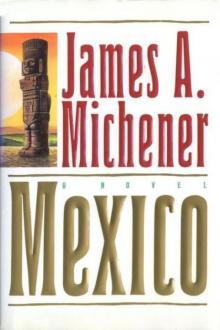 Mexico
Mexico The World Is My Home: A Memoir
The World Is My Home: A Memoir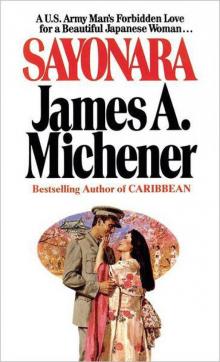 Sayonara
Sayonara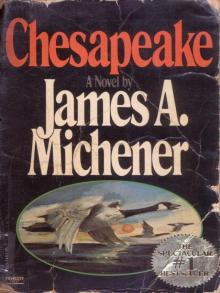 Chesapeake
Chesapeake The Novel
The Novel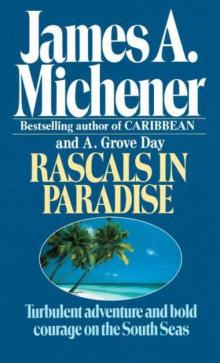 Rascals in Paradise
Rascals in Paradise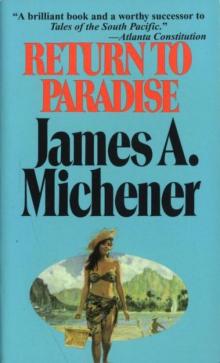 Return to Paradise
Return to Paradise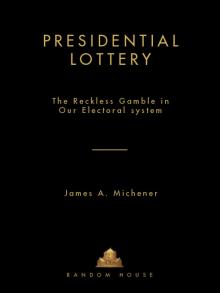 Presidential Lottery: The Reckless Gamble in Our Electoral System
Presidential Lottery: The Reckless Gamble in Our Electoral System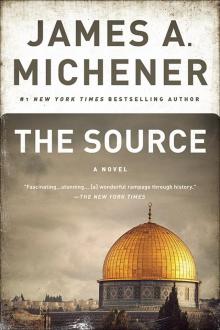 The Source
The Source Poland
Poland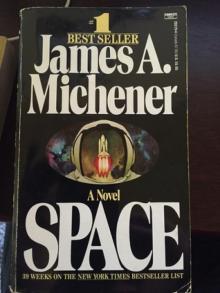 Space
Space Caravans
Caravans Creatures of the Kingdom: Stories of Animals and Nature
Creatures of the Kingdom: Stories of Animals and Nature Iberia
Iberia Hawaii
Hawaii The Watermen: Selections From Chesapeake
The Watermen: Selections From Chesapeake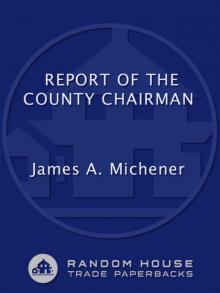 Report of the County Chairman
Report of the County Chairman The Covenant
The Covenant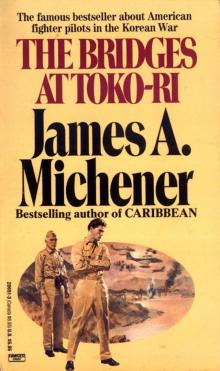 The Bridges at Toko-ri
The Bridges at Toko-ri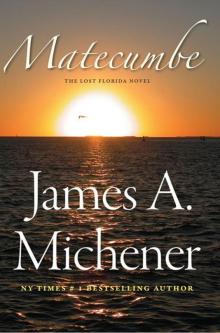 Matecumbe
Matecumbe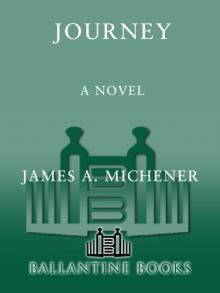 Journey: A Novel
Journey: A Novel Centennial
Centennial Sports in America
Sports in America Texas
Texas Miracle in Seville
Miracle in Seville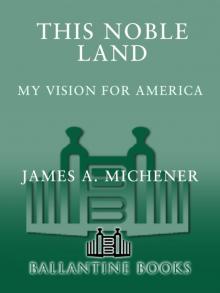 This Noble Land: My Vision for America
This Noble Land: My Vision for America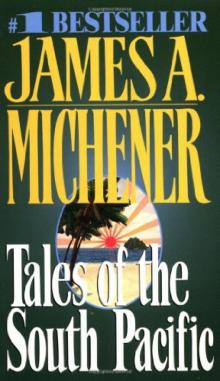 Tales of the South Pacific
Tales of the South Pacific Bridges at Toko-Ri
Bridges at Toko-Ri Space: A Novel
Space: A Novel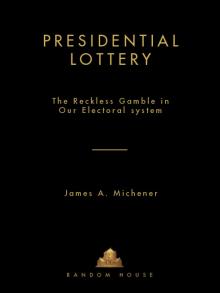 Presidential Lottery
Presidential Lottery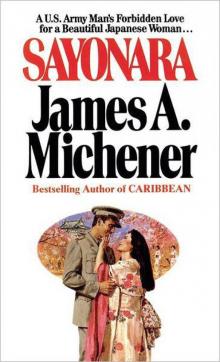 Sayonara: A Novel
Sayonara: A Novel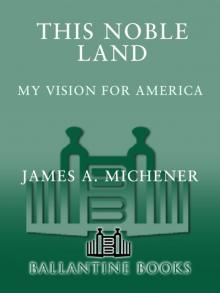 This Noble Land
This Noble Land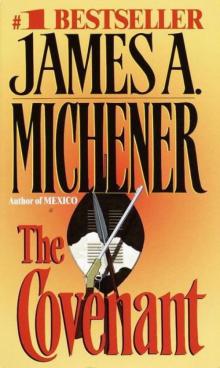 The Covenant: A Novel
The Covenant: A Novel Miracle in Seville: A Novel
Miracle in Seville: A Novel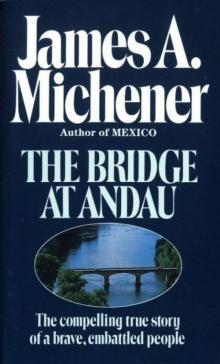 The Bridge at Andau
The Bridge at Andau Source
Source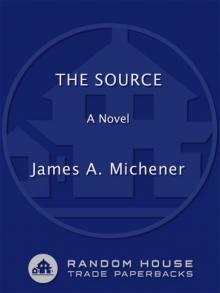 The Source: A Novel
The Source: A Novel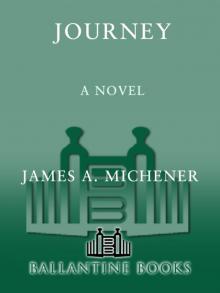 Journey
Journey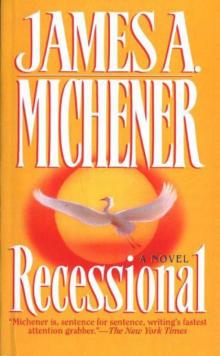 Recessional: A Novel
Recessional: A Novel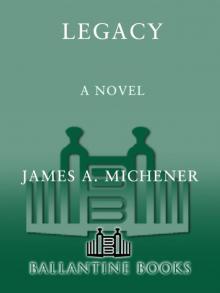 Legacy: A Novel
Legacy: A Novel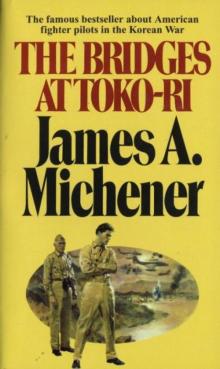 The Bridges at Toko-Ri: A Novel
The Bridges at Toko-Ri: A Novel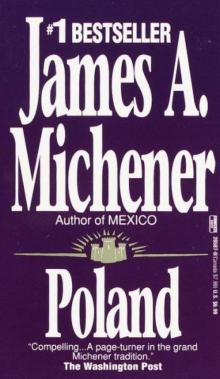 Poland: A Novel
Poland: A Novel